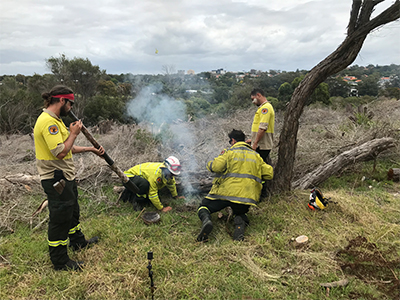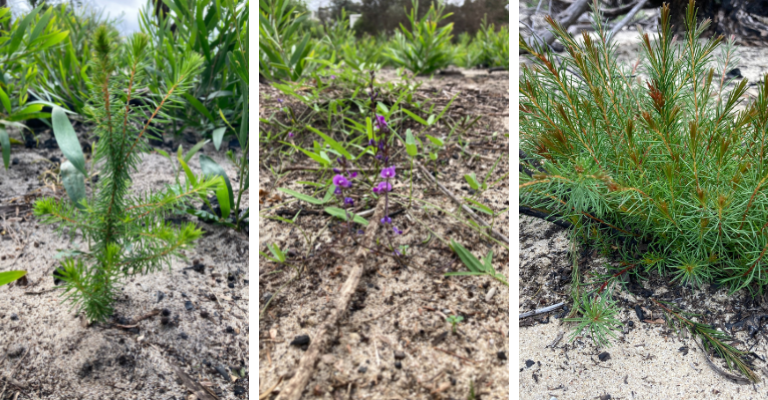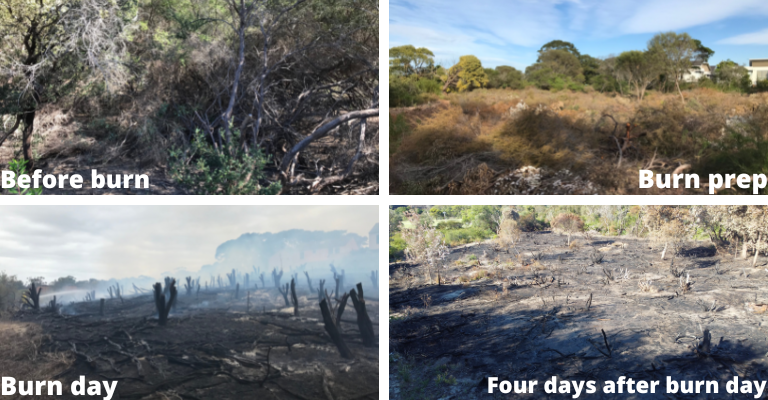Working with fire
- Published Date
- 10/05/2022
- News Topic
- Council, Sustainability & Environment

Fire has long been part of the Australian landscape. For thousands of years, Aboriginal people supported our bountiful landscape by selectively burning some ecosystems, while protecting others. In fact, many of our native plants have adapted to regenerate after being burnt.
Understanding how fire can support a diversity of plants and wildlife to thrive is integral to ensuring a healthy, safe bushland environment. To do this, we work with Fire and Rescue NSW to establish safe, Indigenous fire management practices in our local government area.
Preserving our native flora
Randwick Environment Park is a unique mixture of recreational green space, which includes a playground, oval and BBQ area, as well as bushland and an ephemeral wetland. The park is surrounded by people’s homes, so keeping the bushland safe from uncontrolled fire is important.
The park is also home to an abundance of native flora and fauna, including the Eastern Suburbs Banksia Scrub (ESBS), a community of plants that together create their own ecosystem. ESBS has significant cultural value to local indigenous groups, who traditionally used the plant species for shelter, medicine, food and a range of ceremonial purposes. Once widespread across Randwick City, ESBS is currently classified as critically endangered, meaning without care and protection it could become extinct.
Randwick Council is working hard to bring back the scrub through bush regeneration, flora surveying and propagation of ESBS species. Controlled burning is also part of the process.
Many of the plants within the ESBS plant community rely on heat to germinate and have developed mechanisms to help their survival after fire. In fact, some of these plants depend on fire during some stage of their lifecycle. For example, banksias have a hard seed pod, which is usually triggered to open after fire. In addition to the heat from fire, chemicals in smoke and ash can also trigger the germination of some plants.

How is fire used?
Randwick Council has a bushfire management plan for Randwick Environment Park, which helps to guide our day-to-day management actions. Hazard reduction burns can be used as an effective part of this plan.
In 2021, Council consulted Fire and Rescue NSW to look at performing a burn in Randwick Environment Park. A burn was considered with two main purposes. The first, to reduce underbrush, which can be a threat to nearby homes and residences in the case of a non-controlled fire, and the second, to assist in natural regeneration and seed development of fire dependent species.
What about native fauna?
Within our bushland lives an abundance of native fauna – lizards, spiders, bees, small birds and other life. Before Bushland officers prepare a site for burning, they look for any nests or animals and relocate them to nearby bushland. Wildlife also has time to move elsewhere as the deconstructed vegetation dries out over the following month. Plus, the slow, low intensity, and patchiness of a controlled burn, provides wildlife with the opportunity to escape easily to nearby bushland. After the burn, a flush of new vegetation growth provides the local wildlife with a greater variety of food and resources, benefiting their survival.
Burning at Randwick Environment Park
Two locations in Randwick Environment Park required a controlled burn, equalling roughly a hectare. The burns took place in December 2021, with the assistance of Fire and Rescue NSW and National Parks Indigenous Rangers, who started the fire.
Before the burn
Before a burn takes place, the site needs to be prepared. To do this, we cut down dry vegetation and some larger trees to create a consistency across the site. The goal with the burn is to give lower plants and scrub the opportunity to thrive. Larger trees prevent the light from filtering through, so many smaller native plants and scrub, like ESBS, which should thrive in this area are struggling.
On the day of the burn
Days after the burn

